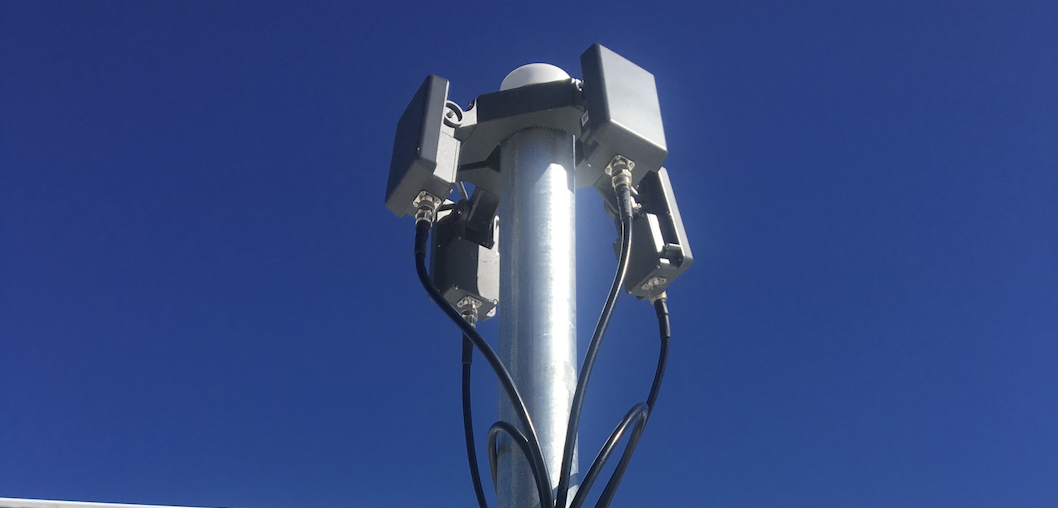.webp?width=407&height=305&name=Remote%20ID%20Sensor%20(1).webp)
Remote ID is more of an equipment requirement than operational rule.
The FAA defines Remote ID as the ability of a drone in flight to provide identification and location information that can be received by other parties. Think of it as a "digital license plate" for drones. As FAA regulations are now in effect, this technology is no longer a future concept but a present-day requirement for airspace awareness and security.
What information with Remote ID broadcast?
A drone compliant with Standard Remote ID broadcasts a specific set of unencrypted data. The AirGuard platform receives this data to provide a clear picture of drone operations.
- A unique identifier (like a license plate) for the drone
- The drone's live location (latitude, longitude, and altitude)
- The live location of the drone's controller (pilot)
- The drone's ground speed and flight timestamp
- Time of flight
- Emergency status indicator in case of emergency (Standard Remote ID only)
It's important to note that Remote ID does not broadcast personally identifiable information like a pilot's name or phone number. Only an agency like the FAA can correlate the drone's unique ID with its registered owner.
Who Needs to Comply with FAA Remote ID Rules?
Compliance with the FAA's Remote ID rule is mandatory. The rule applies to all drones that require registration (typically those weighing 0.55 lbs or more) and are operating in the US National Airspace System.
If an older drone does not have built-in Remote ID capabilities, it must be retrofitted with an FAA-approved broadcast module. The only exceptions are for drones flown purely for recreational purposes within FAA-Recognized Identification Areas (FRIAs).
Who can access the Remote ID broadcast?
Anyone that has access to a mobile device within range of the drone will be able to locate nearby drones.
Who and why would you want to access Remote ID information?
Organizations that might want to access Remote ID information:
- Helicopter pilots
- Part 107 commercial uas operators
- Company
- Schools
How can people access the Remote ID broadcast?
- Remote ID receiver
- App
What is the difference between Standard Remote ID and Broadcast Module Remote ID?
Standard Remote ID will apply to drones with built-in Remote ID capabilities.
Broadcast Module Remote ID applies to drones with Remote ID modules attached to them.
How to Detect Remote ID Signals: The AirGuard Solution
While anyone with a basic app may be able to see a nearby drone, a professional security operation requires a robust and reliable system for comprehensive airspace monitoring. This is where the AirGuard platform excels.
The AirGuard Basic Tier: More Than Just Detection
What's included with the AirGuard Basic Tier?
- Dedicated Remote ID Sensor: A professional-grade sensor that detects all RID-compliant drones within a 2- to 3-mile range. It is rated IP67 for durability and can be connected via Ethernet or an optional LTE add-on.
- Real-Time Drone & Pilot Tracking: Our unified dashboard displays live drone and pilot locations on a map, giving you a clear view of all activity.
- Instant & Actionable Alerts: Receive real-time alerts when a drone enters your monitored airspace, allowing for immediate response.
- Flight History & Forensic Playback: Investigate past events by reviewing detailed flight history and replaying any drone's flight path.
- Whitelist & Flag Drones: Easily mark authorized drones as "friendly" or flag drones that require further investigation.
- Unlimited User Access: Provide full platform access for all members of your team.
Why is Remote ID Important for Airspace Security?
Remote ID provides the fundamental data layer for accountability and situational awareness. For organizations managing critical infrastructure, stadiums, airports, or prisons, knowing who is flying in your airspace is not just a benefit—it's a necessity.
This technology is also the cornerstone for integrating drones safely into the National Airspace System, opening the door to more complex and beneficial operations such as:
- Drone delivery services
- Automated infrastructure inspections (BVLOS)
- Agricultural monitoring
- Enhanced capabilities for law enforcement and public safety








.png?width=2000&height=489&name=Background%20(1).png)